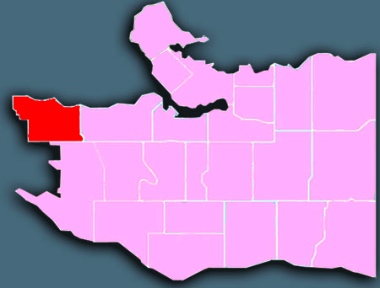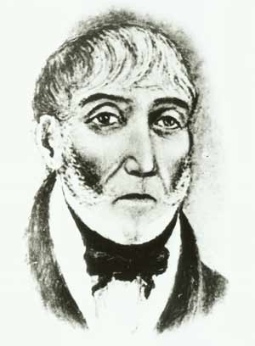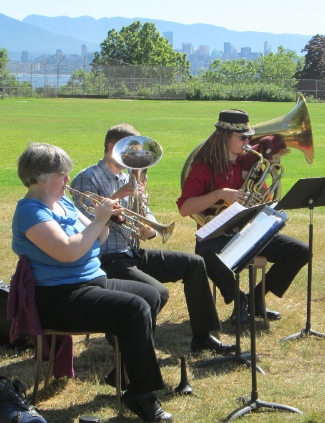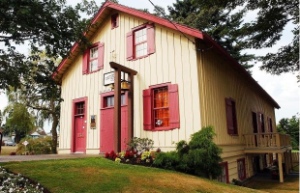 West Point Grey has long been one of the wealthiest neighbourhoods in the region and boasts some of the most expensive properties (above Spanish Banks) in Canada. There is relatively little through-traffic; the main shopping district runs along upper 10th Avenue.
West Point Grey has long been one of the wealthiest neighbourhoods in the region and boasts some of the most expensive properties (above Spanish Banks) in Canada. There is relatively little through-traffic; the main shopping district runs along upper 10th Avenue.
About two-thirds of residents live in detached single or duplex houses. Many UBC students live in secondary suites, but families (most often with teenagers) and people in mid-to-late career predominate.
West Point Grey is on the western edge of the Vancouver, bounded by the University of British Columbia lands. Running north from 16th Avenue, the area slopes steeply downhill from 4th Avenue to Spanish Banks, Locarno Beach and Jericho Beach, which line English Bay. The eastern border is Alma Street.
Demographics
From Statistics Canada, 2011 Census, custom order for City of Vancouver Local Areas (comparative data for the Census Metro Area in parentheses).
population: 12,795 under 18: 19% (19%) aged 65+: 16% (13%)
married/common-law: 49% (48%) living alone: 12% (11%)
have kids at home: 38% (40%) lone parents: 405 widows: 340
mother tongues: ESL 31% (44%), Mandarin 5%, unspecified Chinese 5%, Cantonese 3%, French 2%, German 2%
History
Aboriginal people have lived in what is now called Vancouver for some 10,000 years. When European settlers arrived in the mid-19th century, the Musqueam people had villages on the Fraser River delta and around the tip of the peninsula to Point Grey, False Creek, the West End, Stanley Park and along Burrard Inlet.
In 1792, English naval captain George Vancouver [entered the Strait of Juan de Fuca in HMS Discovery and] renamed most of the landmarks recorded by the crew of Santa Saturnina. . . .
Vancouver Terminals Ltd. recommended [in 1928] a long line of cement docks on the Vancouver shore from Wreck Beach to Jericho. “It is a malodorous mistake,” they said, “on the part of pretty town planners that for all time the entire waterfront must be gummed up and reserved for hot dog and fried onion joints, and allocated as a pleasaunce of yellow sands for tourists and ladies in scant attire and the like. WE WANT BUSINESS!” (That word “pleasaunce” means a pleasant spot.)
Notable features
Point Grey Fiesta: The annual Point Grey Fiesta takes place in early summer at Trimble Park, with a Saturday morning parade along 10th Avenue. There is always an ecumenical church service on Sunday morning in the park.
Greenpeace: One of the major environmental agencies in the world has strong Point Grey roots. Rex Weyler, an early director of Greenpeace, said that Irving and Dorothy Stowe’s “quiet home on Courtenay Street would soon become a hub of monumental, global significance” as they held meetings there in 1969 which led to the founding of Greenpeace.
And the day they sailed away from Jericho Beach in 1971 to protest nuclear testing in Amchitka was said by many to have signalled the real launch of the organization.
Hastings Mill Store Museum: The Hastings Mill Store Museum at the foot of Alma Street has an interesting history. After the Hastings Sawmill closed down in 1930, the store which had served its community was shipped from its original location on the south shore of Burrard Inlet (in what is now the Downtown Eastside) to its current resting place. The museum – Vancouver’s oldest building, and one of the few to survive the great fire of 1886 – features Aboriginal, pioneer and immigrant artifacts.
Churches
Our Lady of Perpetual Help Catholic; Point Grey Inter-Mennonite Fellowship; St Helen’s Anglican Church; U-Campus Baptist Church; West Point Grey Baptist; West Point Grey Presbyterian, West Point Grey United. See map.
Here are a couple of ways in which West Point Grey churches are linked to their neighbourhood. The list is far from complete and we would love to hear about other examples:
* St. Helen’s Anglican Church: Several community groups meet at the church: Dress for Success, Monarch Montessori, Scouts Canada and Vancouver Chamber Choir. As well, members of the church have played a leading role in the Neighbourhood Ministry (with two other Anglican churches) that serves “the homeless and neighbours in need on Vancouver’s west side.”
* West Point Grey Baptist Church hosts ESL classes and a Cross Cultural Cuisine program for people new to Canada.
Further information
* The Courier did several articles on West Point Grey as part of a year-long series of articles on Vancouver neighbourhoods in 2013/2014.
* The city has a West Point Grey page.






